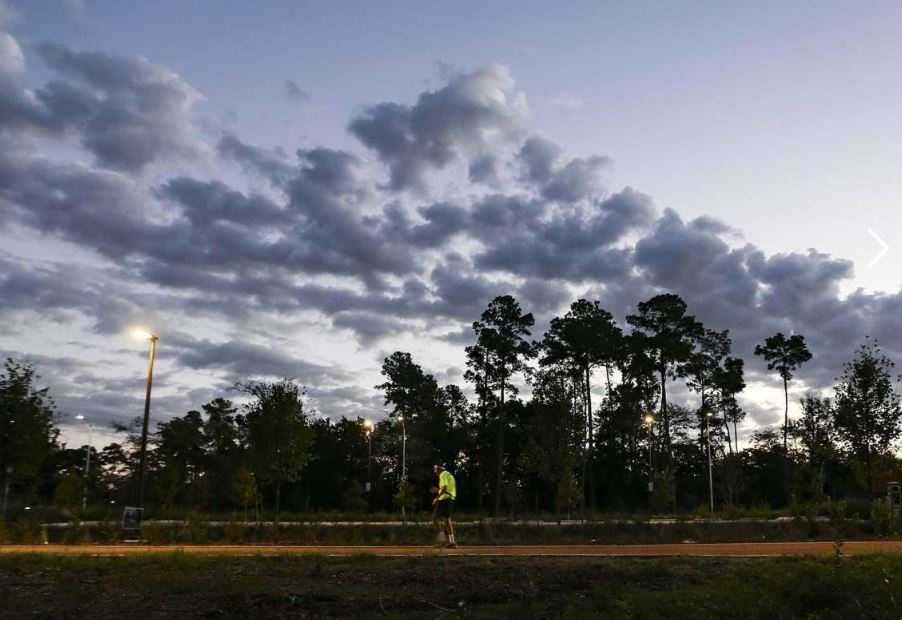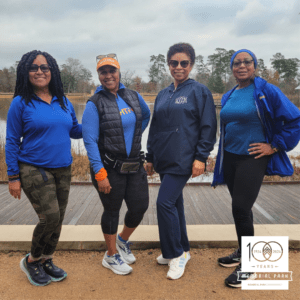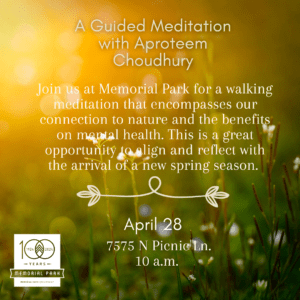What to expect on the new walking path in Houston’s Memorial Park

Houston Chronicle | By Molly Glentzer
Before dawn, the thick rubber treads of our Nikes and New Balances made a measured, steady tick-tock with each step along the crushed granite path of Memorial Park’s Seymour Lieberman Trail. No one dilly-dallies at this time of day, when the ritual of exercise is more about anticipation than relaxation, with hours of meetings and deadlines ahead.
But on Wednesday, a tall chain-link fence diverted my friend Suzanne and me from the familiar, mundane path we could walk in our sleep. The fence also blocked the Memorial Loop Road, directing us into new, more manicured territory. Our pace slowed. Stopped. Even in the darkness, we could see that the once-scruffy woods on the Park’s eastern edge had become a prettier place to walk, along a bio-swale with newly planted trees and orderly swaths of young native perennials and shrubs.
As luck would have it, we were among the first trail users to venture through Phase I of the Eastern Glades, which opened to the public this week. Finally, some of the landscape renderings I’ve memorized during several years of reporting on the Memorial Park Conservancy’s long-term, transformational master plan had come to life.
I’ve walked at Memorial since the early 1980s, not always faithfully but often enough to see the steady widening of the trail, appreciate lighting improvements and observe how a small wildflower patch near the golf course changed with the seasons and matured. A wild heron usually fishes there in the mornings and evenings, down in the garden’s rock-lined drainage something-or-other.
I mourned with the rest of Houston when severe drought and hurricanes decimated an urban forest that offered better views of the golf course in the 1980s and ’90s, before the Chinese tallows, ash trees and invasive understory plants took over. I understood why some people resisted what sounded like a radical idea a few years ago: Nelson Byrd Woltz’s science- and data-driven plan to dial back the landscape by not a few dozen years, but hundreds.
At all of Houston’s major parks, we’re adjusting to the look of a “new” nature that still feels slightly alien (although not to wildlife): An ecosystem of blended prairie, savanna and wetland habitats that embrace our land for what it is. We’re still a few years out from seeing what these environments will really look like; the designs have jumped from paper to the ground, but most of the plant specimens are still babies.
No matter. I was so excited Wednesday morning, I returned to the Park that afternoon to see the new trail and its plants in better light. A monarch butterfly flitted among gangly spires of just-planted purple liatris. A caterpillar crawled on its breakfast of asclepias leaves. Bright golden rudbeckias and the spiky white balls of rattlesnake master caught the sun.
The new sweetgum and elm trees will provide more shade within a few years. Conservation director Carolyn White identified the lower-growing, hard-working grassy stuff that will fill out to provide wildlife shelter above ground and water-filtering roots below — soft-stemmed spike rush, bristle grass, brown seed paspalum, Cherokee sedge, little bluestem and Gulf muhly.
Clethra, coralberry and sweetspire shrubs line the top of the swale, along with some unhappy fragrant sumac that will likely be replaced with Barbados cherries. Yes, even the professionals can be trial-and-error gardeners.
In the future, most of the plant material will be harvested from the Park itself, raised from seed at a greenhouse the conservancy shares with the Houston Arboretum and Nature Center. (They are already growing up about 200,000 plants.)
And the landscape is still taking shape. Phase I of the 100-acre Eastern Glades — which landscape designer Thomas Woltz envisions as a native but semiformal park within the Park — was mostly an infrastructure project. It’s the start of a new park entrance inspired by Hare & Hare’s original, 1930s landscape plan.
The new trail lies just west of a new two-way access road that connects Memorial Drive to the old loop road and a new metered parking lot with 150 spaces — parking fees will benefit the conservancy. There’s also a new restroom and water station. Stormwater from the building’s metal roof will land in a rain garden that drains into the bio-swale, which captures runoff from the entir
A fence will soon go up along the new trail’s still dense west side, as Phase II glade construction begins. That will bring more park to the Park: The old road will be replaced with a savanna grassland, and a large lake and wetland habitat will be built near the golf course.
Late in the afternoon, sunlight danced among the needles of thin, towering pines high above the trail. A number of snags, the totemic remainders of dead trees, also rose sharply through woods that will soon be partially cleared to create the savanna.
I’m still getting used to the word “glade,” but I’m already relishing thoughts of my first walk there.








